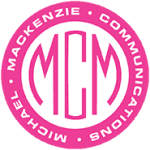Typography plays an important role in setting the mood in advertisements and other marketing efforts. Marketers must carefully select everything from typeface and point size to type style, letter spacing and line length. When well planned, typography can be another constructive way to convey your message and present your brand to your audience. Done poorly, it can distract the reader from your message entirely.
Typography Best Practices
To effectively use typography in advertising, keep it simple. Remember, less is always more.
Start by choosing a font family that best represents your brand. For example, an accounting firm may want to use san serif fonts, like Roboto, that are both professional and easily legible.
Marketing firms on the other hand may choose to use a decorative font like Cooper Black for example that shows more of the brand’s personality and can be used as more of a graphic element. For either purpose, your font should be easy to read, and the size, style and color chosen should be appropriate for all intended publishing platforms.
It’s helpful to research current trends in typefaces and hues before adopting a brand standard so you can pick one that best suits your brand and avoid overused fonts or those already associated with a competitive brand.
Typography in Layout
The golden rule of typography in layout is to make sure that it follows the reader’s natural reading pattern. In most parts of the world, people read from left to right, then top to bottom. Suppose you want your audience to follow this natural pattern when reading your document. In that case, you need to ensure that your typesetting choices reflect this pattern by aligning related blocks of type, giving the reader appropriate space between lines or columns of type and increasing or decreasing font size for headlines and body copy as appropriate.
Assigning hierarchy in your text with headings can help create a layout that follows this natural reading pattern. Headings allow readers to easily and quickly digest the organization of your content. There are six levels of headings for HTML; however, to follow best practices, stick to using one to two max. Lastly, insert negative space or white space between the header and body text to ensure you focus your audience’s attention on the content.
Thinking through the clarity of the layout and design of your content can make a world of difference in how it’s perceived by your audience. Consistent use of fonts in all your promotional efforts helps to establish a strong, cohesive brand identity. Incorporating typography into your brand standard is an effective way to maintain a cohesive look for all your materials.
This post is courtesy of MMC Digital Marketing Coordinator Kayla Travis.

